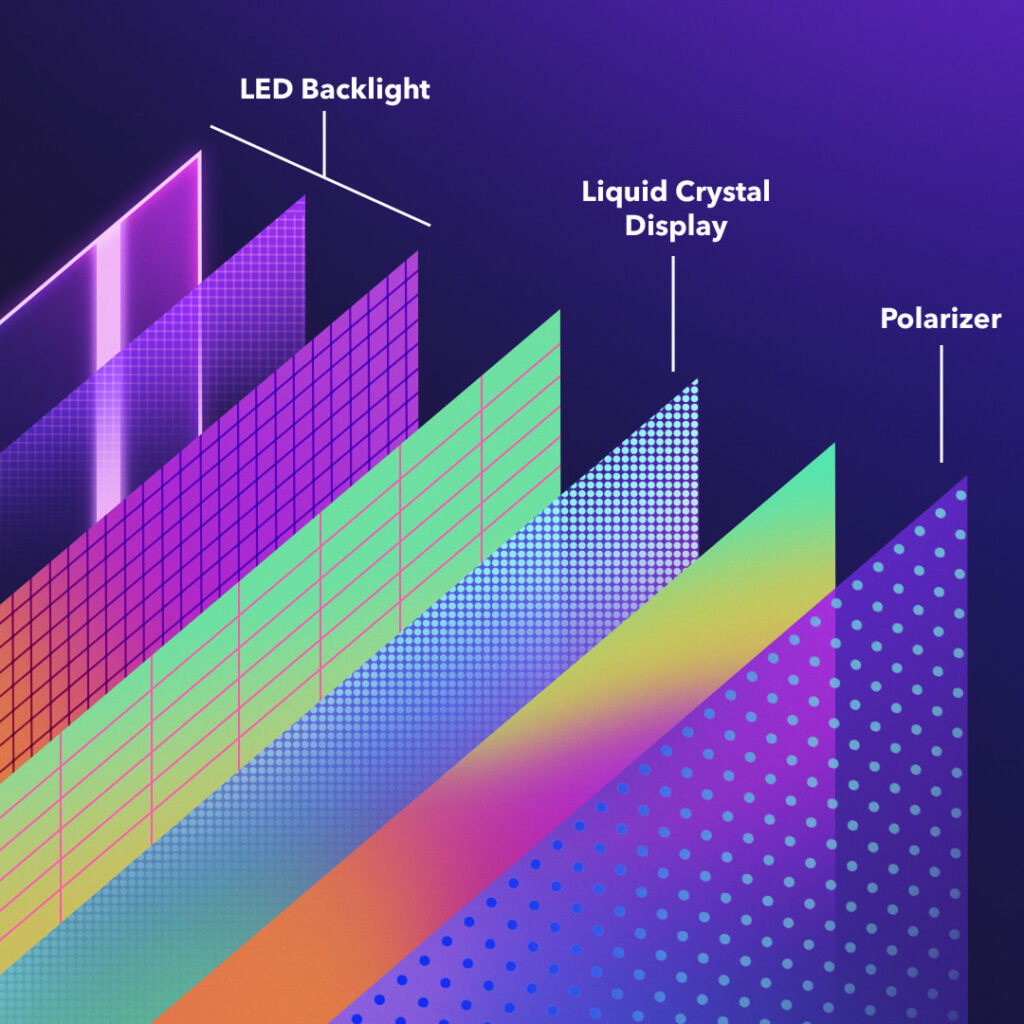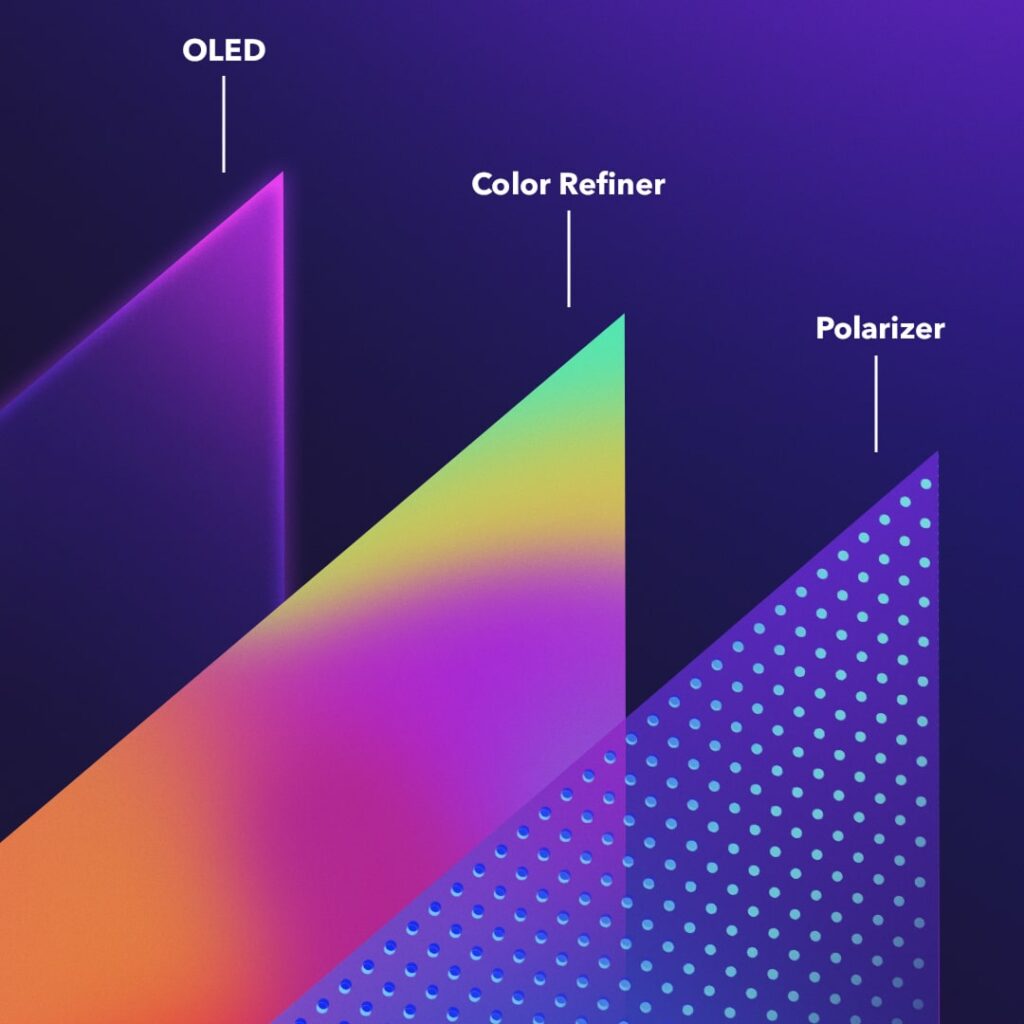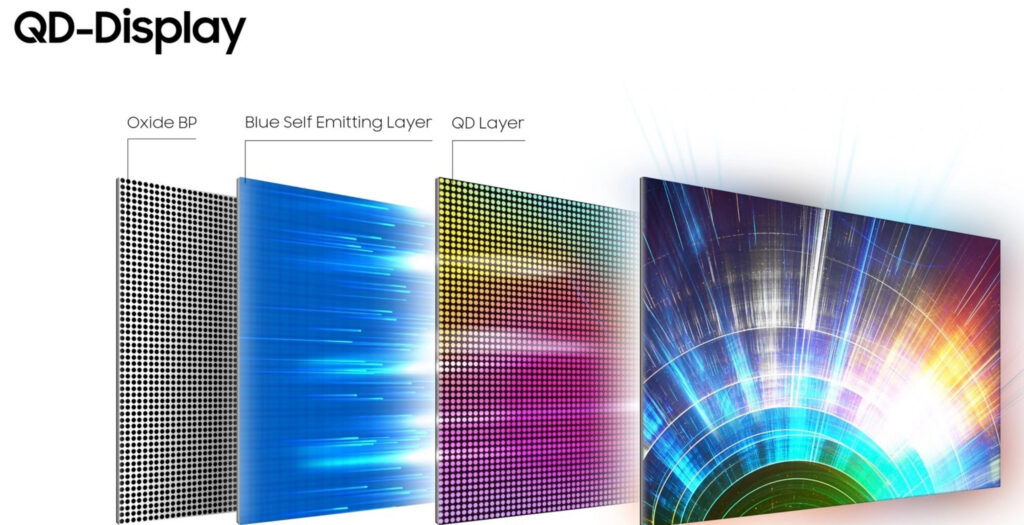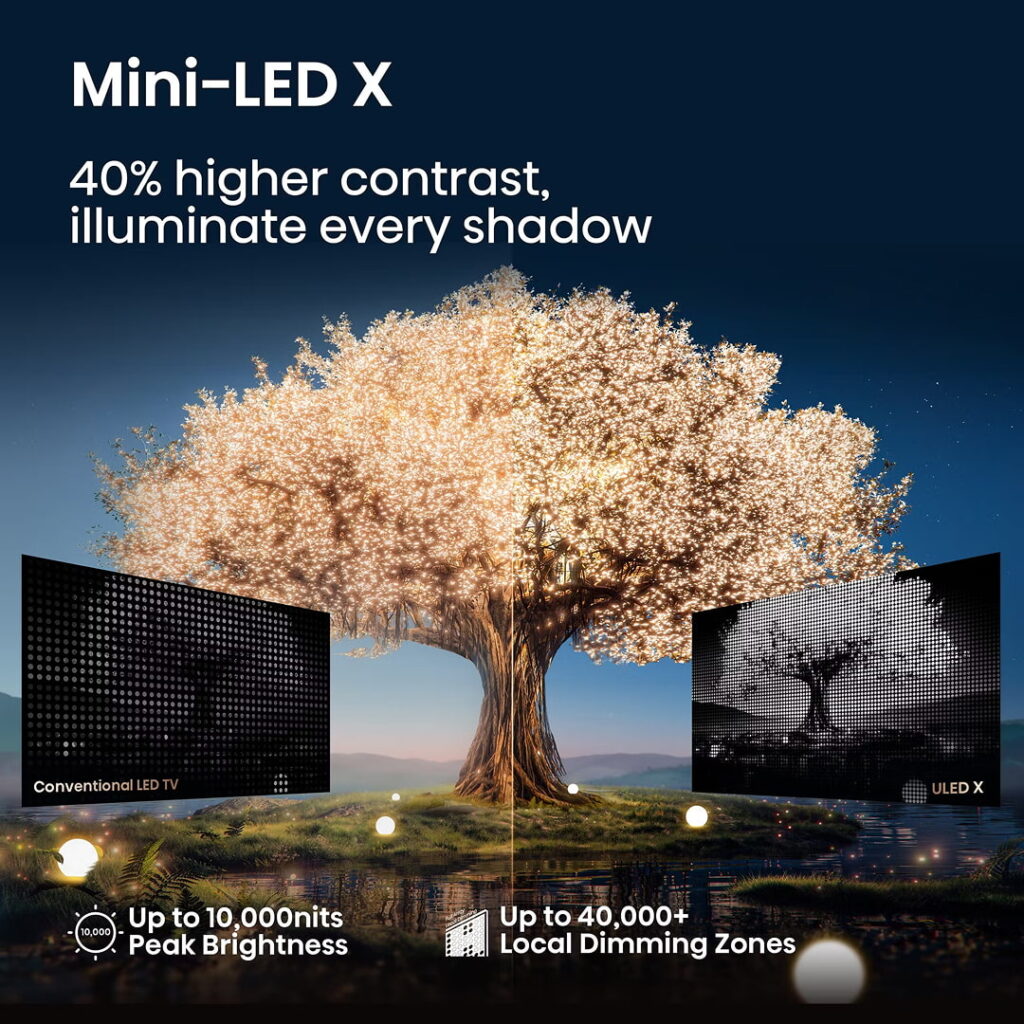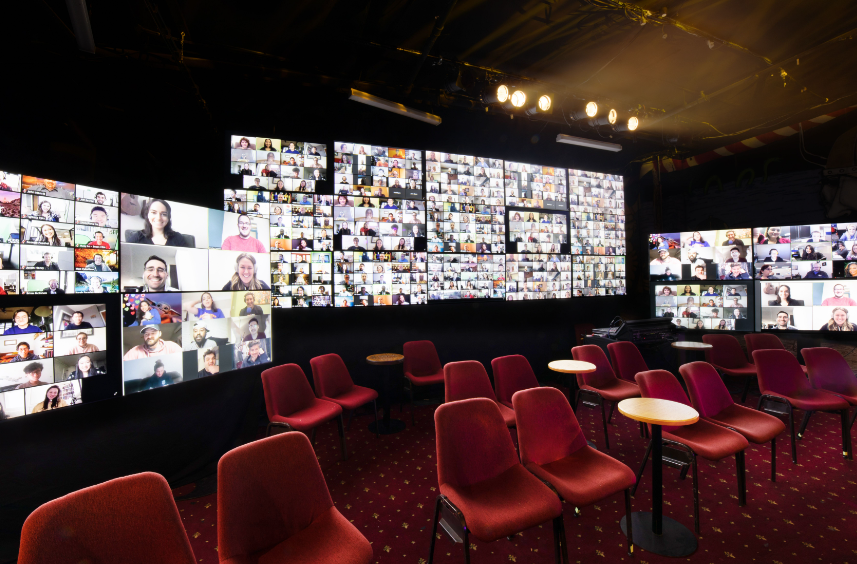The display world has changed a lot in recent years. Whether you’re kitting out a corporate boardroom, setting up a digital signage network or creating an exhibition space, the choice between OLED and LED LCD can make all the difference.
As these technologies evolve, understanding their strengths, weaknesses and use cases becomes more important than ever.
Display technology is more than just showing information – it’s a tool for communication, branding and operational efficiency. The right choice can help deliver your message, improve operational effectiveness and create experiences for your audience.
The wrong choice can mean compromised colour accuracy and visibility, higher maintenance costs and frustrated users. As screens become more central to our professional and personal lives, the choice between OLED and LED LCD has become more important. Both technologies can produce great images but they have different strengths and weaknesses that can impact your viewing experience.
This guide will help you understand the differences and make an informed decision based on your business needs.
The Basics: How Each Technology Works
At the heart of the OLED vs LED LCD debate is a fundamental difference in how these technologies produce the images we see. Understanding these core principles helps explain their performance and why they behave differently in different situations.
LED LCD Technology Explained
LED LCD displays represent the evolution of traditional LCD technology, combining proven liquid crystal displays with modern LED lighting solutions. This hybrid approach has become the backbone of the display industry, offering a reliable and cost-effective solution for a wide range of applications.
The technology operates through a sophisticated two-layer system:
- LED backlights provide the foundational illumination
- LCD panel controls light passage to create images
Think of it as a sophisticated light filter, the LED backlight creates a consistent light source, while millions of tiny liquid crystal cells in the LCD panel act as gates, controlling how much light passes through each pixel.
This combination allows the display to create the vibrant images we see on screen, with recent advances in local dimming and quantum dot technology pushing the boundaries of what’s possible with this approach.
OLED’s Revolutionary Approach
OLED technology represents a fundamental shift in how displays generate images. Rather than relying on a separate backlight, OLED employs organic compounds that emit light when electricity passes through them. This revolutionary approach has opened new possibilities in display technology.
Key characteristics of OLED include:
- Each pixel generates its own light independently
- No backlight required, enabling thinner designs
- Individual pixels can turn completely off
- Instantaneous pixel response time
This self-emissive nature marks a significant departure from traditional display technologies, enabling unique performance characteristics that we’ll explore in detail. The ability to control each pixel individually has profound implications for image quality, particularly in how the technology handles contrast and motion.
QLED Technology: The Quantum Leap
QLED is an evolution of LED LCD technology with the addition of quantum dots, tiny particles that improve how displays produce colour. These quantum dots sit between the LED backlight and LCD panel where they turn the blue LED light into pure red and green light.
When combined with the original blue light this creates more accurate and vibrant colors than traditional LED LCD displays can.
This quantum boost gives you:
- More accurate color across the entire brightness range
- Wider color gamut, more colors shown
- Better energy efficiency for bright images
- Color stability over the lifetime of the display
- Brightness without sacrificing color accuracy
Think of quantum dots as color fine tuners that take the basic blue light and turn it into exactly the right shade for each pixel. This boosts color accuracy and brightness while being energy efficient.
QLED still uses the same basic principles as LED LCD technology – a backlight shining through an LCD panel – but the quantum dot layer brings the color performance closer to OLED while retaining the brightness of LED LCD.
Key Performance Differences and Refresh Rates
To understand how these technologies perform in real-world situations we need to look at several key factors that impact image quality. Factors like response time can cause motion blur, affecting moving images. Let’s dive into these differences in detail to see how they affect your viewing experience.
When it comes to colour performance, OLED displays are famous for their wide colour gamut and high colour accuracy. This makes them perfect for applications where precise colour reproduction matters, such as graphic design and video production. OLEDs can produce more natural colours at different brightness levels.
Contrast and Deeper Blacks Levels
The ability to produce deeper blacks and maintain high dynamic range and contrast in different scenes is one of the biggest differences between these technologies. This affects how images look and how immersive the viewing experience is.
OLED Technology:
- Perfect blacks through pixel shutdown
- Infinite contrast ratio theoretical maximum
- Better dark scene performance
- No blooming around bright objects
LED LCD Technology:
- Good blacks with advanced local dimming
- Limited by backlight technology
- Some light bleed in dark scenes
- Higher overall brightness potential
The difference is most noticeable in dark rooms or when watching content with many dark scenes. OLED’s ability to turn off individual pixels completely is something LED LCD technology, despite many advancements, can’t match.
Brightness, Backlight and Ambient Light Performance
The relationship between display brightness and ambient light is crucial for image quality and viewer comfort. Understanding how each technology handles different lighting conditions will help you choose the right one for your environment.
LED LCD displays are stronger in bright environments:
- Higher sustained brightness
- Better in well-lit rooms
- Great for daytime viewing scenarios
- Consistent brightness across screen sizes
OLED technology requires more consideration:
- Moderate peak brightness
- Better in controlled lighting environments
- More affected by ambient light
- High brightness in OLED TVs can mitigate the problem of glare in bright rooms
- Variable brightness based on content displayed
This difference is important when considering placement and usage scenarios. A display that looks great in a darkened room might struggle in a bright office and vice versa.
Colour Accuracy
When it comes to colour performance, OLED displays are famous for their wide colour gamut and high colour accuracy. This makes them perfect for applications where precise colour reproduction matters, such as graphic design and video production. OLEDs can produce very deep blacks which makes the overall viewing experience more immersive and visually stunning.
On the other hand, LED LCD displays can struggle with colour accuracy and may not produce the same level of deep blacks as OLEDs. But they excel in brightness so are suitable for environments where high brightness is required, such as outdoor signage and tv displays.
The higher brightness of LED LCDs means images remain clear and visible in well-lit conditions, a practical solution for many lighting scenarios.
Display Characteristics
Size and Availability
OLED displays are available in a range of sizes from small screens in smartphones to large panels for home theaters. However, the cost of OLED displays can be higher which may limit their availability in certain sizes and price ranges.
Despite this, OLEDs have many advantages, wider viewing angles, faster response times and deeper blacks, so are a premium choice for those who value image quality.
LED LCD displays are more widely available and often cheaper to produce. So they are a popular choice for budget TVs and other applications where cost is a major factor. The versatility and affordability of LED LCDs means they are a practical option for many users.
Looking Forward
As display technology evolves we are seeing exciting developments that will address the limitations of both OLED and LED LCD technologies. Understanding these emerging trends will help you make a better decision about current technology investments.
Emerging Technologies show promise:
- Mini-LED backlighting for improved local dimming. Mini-LED technology requires smaller individual LED lights to fit within the TV structure, allowing for more precise light intensity adjustments and better contrast.
- Micro-LED displays combining the best of both worlds
- QD-OLED hybrid solutions enhancing colour performance
- Better processing for higher image quality. These will blur the lines between technologies.
These new advancements will further blur the lines between technologies and give better performance across all metrics.
Making The Right Display Choice
Choosing the right display between OLED and LED LCD ultimately depends on your situation. Both have their place and neither is a universal “best” for all.
Choose OLED if:
- Perfect blacks for premium viewing
- Wide viewing angles for group settings
- Top-notch image quality in controlled environments
- Motion clarity for fast-paced content
- Overall picture quality, OLED wins
Choose LED LCD if:
- Brightness for well-lit rooms
- Static content reliability
- Cost effective at larger sizes
- Consistent performance over time
Remember both technologies will improve and today’s limitations may be solved by tomorrow’s innovations. Consider your needs now while keeping in mind the rapid pace of display technology evolution.
Get in touch with our team today to discuss your tv rental requirements and we’ll give you a customised recommendation based on your needs. We’ll help you find the right display solution for your business application that balances performance, reliability, rollout-scale and cost.


